Collar of the osteochondrosis is a kind of dystrophic change of the intervertebral discs in the neck area.
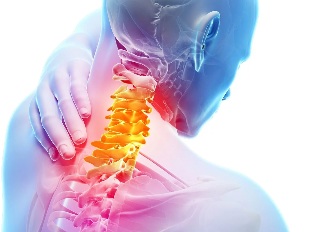
Negative impact not only are exposed to the discs, but also of the vertebrae, soft cartilage fabric. The main feature of the cervical region is the fact that your vertebrae are not the most reliable of the structure in comparison with other departments, which makes this area is very vulnerable. The vertebrae here in the proximity of one to the other, as well as the pathways of communication, which is in charge of the power of the human brain.
If there is displacement of the vertebrae, there is a great likelihood of nerve compression beams and of the arteries, which, inevitably, comes to the appearance of a hernia between vertebrae and main, that is to say, changes in the structure of vertebral of the unit.
What is it?
The osteochondrosis of the cervical spine (Osteohondroz) is specific of the defeat of the intervertebral discs, as a result of which will damage the discs, the vertebrae and the joints of the cervical region, there is a reduction of the height of the intervertebral discs. The disease progresses, if not treated, and can cause headaches, loss of the circulation of the blood and even hernia. As treating osteoporosis, the disease occurs because of a violation of mineral exchange, and, in consequence, the bones and joints become less strong.
The osteochondrosis can cause instability of the cervical spine (the symptoms and treatment are similar to those of with chondrosis, but they have a number of characteristics), which often is accompanied by a displacement of the vertebrae. This, in turn, accelerates the development of degenerative disc disease, the destruction of vertebral of the division.
The stage of
Doctor must determine the degree of development of the degenerative disease of the cervical disc, based on the background, as well as the conduct of the inspection of the patient. There are four distinct degrees:
- The first-degree. The disease is found in the Yolk, the patient noted a slight pain in the neck, that may be more intense, if a person begins to rotate the head.
- At the second level. The patient may complain of intense pain in the cervical region, which may have been in the upper extremities. The clinical picture shows that at this stage of development of the disease is observed crushing of the beams nerve, causing intense pain. It also celebrates the headache, weakness and general discomfort.
- By the third grade. The pain becomes almost continuous, are also used on the shoulder or in the sugar arm. Some patients are diagnosed with a hernia of the intervertebral discs, which leads to the loss of sensation of the upper extremities. During the medical examination, it is observed a noticeable decrease of the mobility in the neck, as well as pain to palpation.
- The fourth level. At this stage of the disease the intervertebral disc is almost completely destroyed. In its place is the connective tissue, which leads to a worsening of the patient's condition. He begins to feel more pain, noises in the head, as well as a bad orientation in space. This suggests that the artery is pinched, which impedes the natural nutrition of the brain.
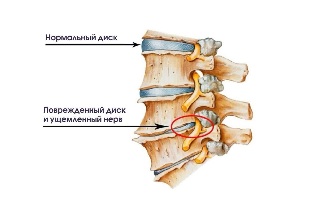
The symptoms of degenerative disc disease cervical
Important symptoms of the degenerative disc disease cervical are dizziness, headaches, racing horses of the blood pressure.
The diagnosis of the disease difficult, the pain sometimes does not manifest itself, and the symptomatology is deleted the nature of the same, the indiscriminate use of strong painkillers covers the signs of the disease. The patient feels no pain, is considered healthy, and so continued until the development of the irreversible processes in the tissues of the joints in the neck.
Headache when osteochondrosis cervical
It is one of the most common non-specific features of many diseases in humans. Headaches especially widespread in the population. It is difficult to determine the cause of the headaches, and, without more, associate with spinal cord injuries. Revealed about 14 different causes of headache in human beings.
The most common causes of headaches when you described for us of the pathology is:
- The spasms of the blood vessels of the brain;
- The crushing of the nerve roots;
- Reflects the increase in the intracranial pressure.
Headache when osteochondrosis cervical cancer can be similar to the feeling in high blood pressure, angina, or stroke. Without more, the people of the middle ages and, normally, there is a risk of development of cerebrovascular accidents or heart attacks.
The sensation of pain may be paroxysmal, constant, vibrant, and forceful.
When the pathology is of the heart, the patients complain of discomfort in the chest, accompanied by a violation of the heart rhythm. Determine the cause can be only a qualified doctor. In case of headaches, in combination with nausea, dizziness, and retrosternal pains, necessarily do an electrocardiogram.
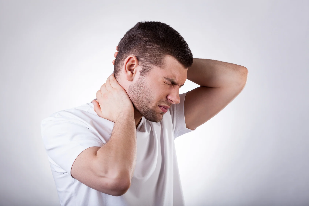
Dizziness when osteochondrosis cervical
This condition is not always clearly indicates the osteochondrosis of the cervical spine.
The vertigo may be the result of:
- The swelling in the average, or inner ear;
- Spasms of the vessels of the brain;
- The violation of transmission of nerve impulses;
- Problems with the vestibular apparatus;
- Diseases of the cardiovascular system.
There are No clear criteria for the vertigo to osteochondrosis. However, there are variables of the system and non-systemic vertigo, have clear differences.
It is recommended to know the differences of the system and not the system vertigo, this will help to determine the causes of the unusual status:
- The System of dizziness is the sensation of circular movement, the objects around her or the body, which is the consequence of the breach of work balance, analyzers, and visual receptors in the joints, the muscles and the epidermis (the osteochondrosis of different etiology);
- No, the system the vertigo is the feeling of nausea, lightheadedness, unsure of status in the vertical position. When non-system dizziness, the sensation of circular rotation of the fault, and it's an important difference that is compared to the signs.
The person who feels the vertigo of one of the specified types, it should be examined by an experienced doctor, in the first place, neuropathologist, or (if there is any suspicion of disease of the ear, nose, and throat), otolaryngologist.
The reason for the emergency hospitalization, not correlated with osteochondrosis of the cervical spine, is the identification of the person who has (in addition to the dizziness) reasons such as:
- The paralysis of the facial muscles and the numbness of the part of the shoulder girdle;
- Headache strong against the deterioration of well-being;
- Lack of coordination of movements;
- The loss or extinction of the consciousness.
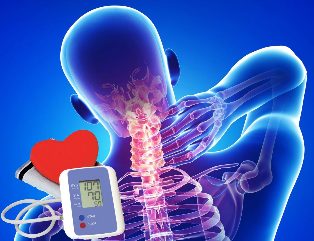
The blood pressure during the osteochondrosis of cervical
The relationship of osteochondrosis cervical alterations of the blood pressure a long time ago installed. The cervical vertebrae are important nerve endings and the blood vessels.
Are characteristic peaks of pressure during the day. Hypertension for a long time, is not a feature of this disease. Reflects the irritation of the nerve endings, and short-term spasms of the blood vessels cause the break of the daily dynamics of the hypertension.
A distinctive feature of the increased pressure of cervical spine osteochondrosis is a combination of the following symptoms:
- Headache;
- The pain in the limbs and the chest;
- The reduction of the sensitivity in the area of the nuchal translucency thickness;
- The appearance of pressure peaks after the stress, muscle tension, long-term presence in an awkward position and other similar situations.
These signs must be taken into account in the self-differentiation of the hypertension of diverse etiology.
The sudden jumps HELL and the rapid deterioration of wellbeing are the basis for the treatment of the services of urgent medical aid.
Syndromes of degenerative disc disease
The clinical presentation of degenerative disease of the cervical disc is limited in some syndromes. The syndrome of this is that some of the symptoms that occur together.
The osteochondrosis is composed of the following syndromes:
- Spinal. It is also called spinal, indicating that in the process they are involved the bones and the cartilage fabric. This leads to the formation of these symptoms: limitation of motor activity in the neck, pain to your curves, radiological changes in the image of the cervical spine. Precisely the simultaneous appearance of these features is spinal syndrome. A Similar set of clinical signs occurs when the miosites (pathology is in the muscle tissue), and the painful movement of a satellite of many other diseases.
- The syndrome of vertebral artery. Appears when the participation in the process of vascular bundles, which are responsible for the blood supply of the tissues of the central nervous system. The symptoms indicate that the brain tissue has ceased to receive the necessary quantity of useful substances. How to recognize this syndrome? The first symptoms are dizziness, sensation of noises in the ears, changes in blood pressure, the appearance of a "veil" in front of the eyes. It is said that one of the vertebral arteries are located in stavlennia state. Each glass has its nerve endings. If you and tighten that Innervate the vertebral artery appears migraine headaches, numbness, a brief reduction of vision on one side. In summary, the changes in the glass are carried to the brain needs oxygen. At this time, the person feels drowsiness, the short duration of the violation of the conscience, it loses the attention and the control, the worse it works and stores information. With this clinical picture, we must differentiate between the neck of the osteochondrosis with atherosclerosis vertebral artery, and compression, tumor, or inflammation.
- Cardiac syndrome. Is manifested burning sensation in the chest,the onset of shortness of breath. The man is aware of its beat rate of the heart, becomes tired and irritable. It is a situation that characterizes the pathology is cardiac, for example, for angina, coronary syndrome, myocardial infarction. A conclusion is accurate about the causes of these symptoms can be done after the patient is performed an ecg.
- Radicular syndrome. Cervical region innervates 8 pairs of nerves, each of which has the loins instead of the exit of the nerve from the vertebra. During their involvement in osteochondrosis, the patient feels the reduction of the sensitivity or vice versa pain. You may experience numbness of the nape of the neck if your pain, reducing the sensitivity of the tongue, BTE area, pain in area supraclavicular. Sometimes, there is a violation of the swallowing, movements in the belt of the upper limb, numbness of the fingers of the hands.
First aid in the home at the time of aggravation of the degenerative disc disease
With a strong syndrome painful can be applied pain medications, such as Analgin, Tempalgin or Baralgin. If these medications do not bring relief, you can take nsaids (Nise or Diclofenac).
Often they use "distraction" of the tool, for example, Spray patch, there is no cure, it only heats the inflamed area and distracting from the pain. In the case of the formation of edema in the area of the inflammation, the patient may drink an infusion of herbs or a diuretic along 3-4 days. Is it possible to cure osteochondrosis such methods? These measures are only temporary, for the treatment of the causes you should consult a doctor.
It should be noted, a medical cure to osteochondrosis. When it appears the suspicion that the cause of pain in the cervical region of the spine is the emergence of the osteochondrosis, you should consult a neuropathologist. This specialist deals with diseases of this type. In some hospitals there are narrow professionals who work in the know of the diseases of the spine. If your health center is the spine, you should get in contact with the question of how to cure this disease, immediately to him.
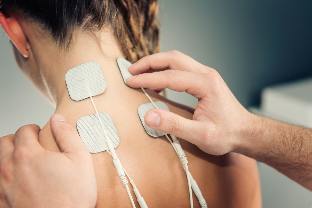
How to cure osteochondrosis cervical?
In the initial stage of development of cure osteochondrosis is possible without drugs, just parisian with a review of the diet, the mode of the day, with the regularity of the structure of special exercises. When running forms of the disease, the effective treatment for is only possible if the application of different medications that help to stop the degeneration of the vertebrae.
In the complex of therapeutic measures necessarily include physical therapy electrophoresis with drugs, ultrasound, magnetotherapy, lazeroterapiya. These methods help to deal with the pain, inflammation, swelling tissues, improve the processes of exchange and the circulation of the blood.
The pharmacological treatment
The main methods of treatment of osteochondrosis of the cervical spine is the administration of medications, physiotherapy, massage sheyno-of nuchal translucency, is especially effective for the gymnastics of the osteochondrosis of cervical. The main groups of drugs used in this disease are:
| Name of the | The principle of action |
| Non-steroidal anti-inflammatory drugs (nsaids). It is common for voltaren, Nise, Movalis, ketonal, Ketanov, diclofenac, nimesulide and other | Reduce the pain syndrome, contributing to the uprising aseptic inflammation and edema spine damaged nerve. |
| Drugs that improve the rheological properties of the blood and blood flow. Is the aminophylline, trental. | Improve the power supply damaged the nerve roots and improve the flow of blood to the brain. |
| The vitamins of the group S. it Is combilipen, unigame, milgamma, neurobion. | Improve the metabolic processes in the nervous tissue. |
| The muscle relaxants. Is mydocalm, sirdalud, chiseled, tizanidine etc | Medicines that remove the spasm of the muscles. |
| Chondroprotectors. Is (glucosamine and chondroitin) artra, teraflex, doppelgerts, toad stone, Andronova, structovis, alflutop. | Drugs that renew the tissue of cartilage, shaving, including damaged intervertebral disc. |
Taking the tablets of the degenerative disc disease, it must be remembered that a significant effect of drug treatment tablets just in case of combining it with other methods, including exercise. Likewise, it should be noted that the physician must assign, to cure the disease, in function of the phase and other symptoms.












































